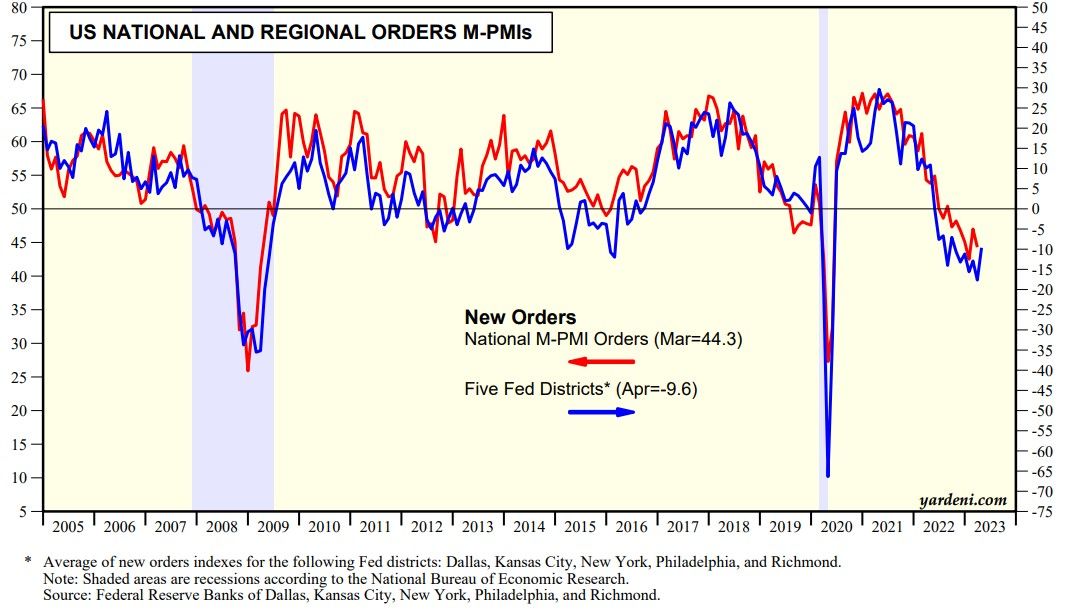Economic growth wasn't as weak as suggested by real GDP which rose only 1.1% (saar) during Q1. During Q4, inventories surged as consumers pivoted from buying goods to purchasing services. Goods producers and providers stopped building unwanted inventories by cutting their orders to their suppliers and by lowering their prices to move their excess merchandise out the front door. So, excluding inventories, real final sales rose 3.4% during Q1, led by a solid 3.7% increase in real consumer spending, which also helped to reduce inventories (chart).

During Q1, inventories declined $1.6 billion in real GDP after soaring by $136.5 billion during Q4 (chart). That swing depressed real GDP significantly.

This explains why manufacturing indicators, particularly new orders, have been weak in recent months. The rolling recession has been rolling through the goods sector of the economy, while the services sector has been booming.
April's average of the new orders indexes compiled in the regional surveys conducted by five Federal Reserve Banks rose in April suggesting that orders may be bottoming. If so, then inventories should be a positive contributor to real GDP during Q2.



